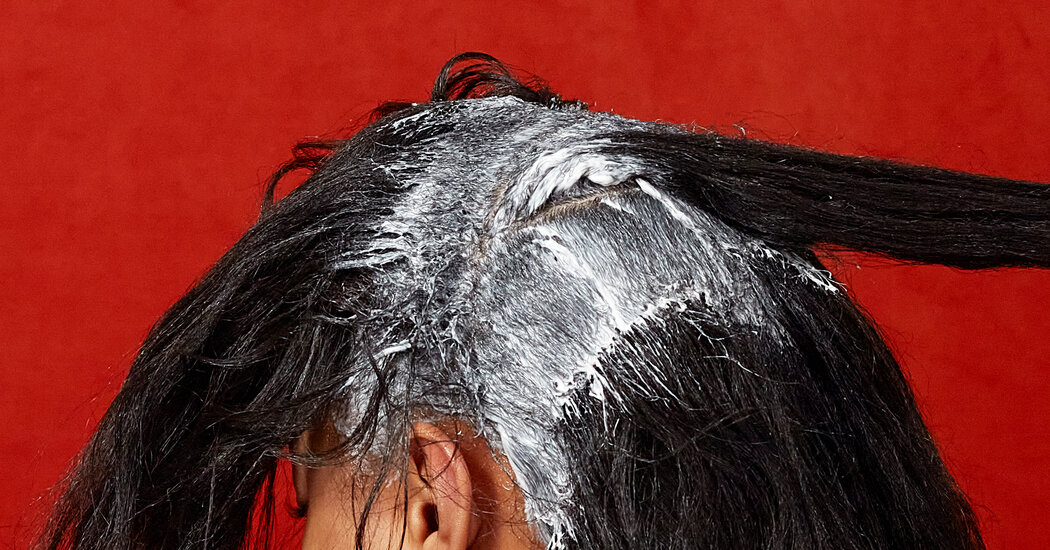
To report on the dangers of hair straightening products, one writer recalled her childhood — and that of other Black women.
Times Insider explains who we are and what we do and delivers behind-the-scenes insights into how our journalism comes together.
At The New York Times Magazine, where I cover the intersection of health, race and inequality, I have reported on maternal and infant mortality, H.I.V. and AIDS in the American South, environmental racism, eugenics and racial disparities in Covid outcomes and in life expectancy. I also wrote about racial myths in medicine that have endured for centuries for the 1619 Project. I do my best to ground my reporting in the work of Black medical experts, whose voices are often missing from the mainstream media. The first question I always ask them is, “How did you get into the work?”
For my recent article on the dangers of chemical hair relaxers, which are marketed to and mainly used by Black women and girls, I focused on a group of Black women epidemiologists who studied racial disparities in reproductive health. Using their work as guideposts, I pieced together a slow-burning trail of scientific evidence, which began decades ago and connected the ingredients in straighteners and other hair products to the early onset of puberty — and many of the reproductive health disorders that can result, including uterine fibroids and several cancers.
I asked my origin question to every scientist, and they all gave essentially the same answer: as kids, each had experienced the Black girl rite of passage of sitting at the kitchen table or in the salon while chemical relaxers were applied to their hair. This lived experience informed their work, most of it under the radar, buried in wonky scientific journals that rarely reached the public.
Things took a dramatic turn two years ago with the publication of the Sister Study, conducted by a division of the National Institutes of Health, which made a direct association between hair straightening products and uterine cancer. Frequent users of the straightening products, the study found, were more than twice as likely to develop the disease as those who didn’t use the products.
Like the scientists featured in my article, generations of Black women have used chemical relaxers, often since childhood, without knowing the potential dangers. The products, designed to transform hair from “kinky” to smooth, have long been marketed as safe. But the federal government, with its lax oversight of cosmetics, provides little guidance. The Food and Drug Administration bans or restricts only nine toxic chemicals used in cosmetics, whereas the European Union regulates 1,300. (When I first saw that statistic, I assumed it was a typo.)
I spent a year reporting this story — so long that my family and friends stopped asking, “What are you working on?” It took so much time because I was determined to follow the science and piece together the evidence with care and caution. I wanted to avoid creating unnecessary panic, or blaming Black women for using the potentially harmful products that they trusted on themselves and on their children.
This post was originally published on this site be sure to check out more of their content.








